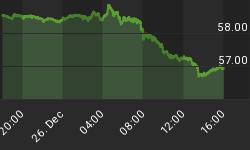Increasing Product Demand, Higher Product Prices ...
Increasing Liquidity in the Market, Higher Stock Market Prices ...
Both are true if Supply remains the same or less. Some things like stock buyback programs reduce supply because shares are re-absorbed into their respective companies. We searched for on-going stock Buyback programs in effect for December and found 52.
This is not a huge number, but none-the-less, a good number. So the question is, "what is happening to Liquidity levels in the stock market?" Is Liquidity flowing in, or out?
The answer is found in today's chart ... shown below.
The first two basics are: If Liquidity is in Expansion, the market goes up. If Liquidity is in Contraction, the market goes down.
The second two basics are: If Liquidity is moving up, stock prices have to increase. If Liquidity is moving down, stock prices have to decrease.
Common sense isn't it? Now, with those basics, take a look at today's chart and draw your own conclusion relative to "what Liquidity is doing in the market right now".
(Out of respect for our paid subscribers, today's chart is only shown occasionally as a courtesy to our free members. This chart is posted everyday on our paid subscriber site.)

















